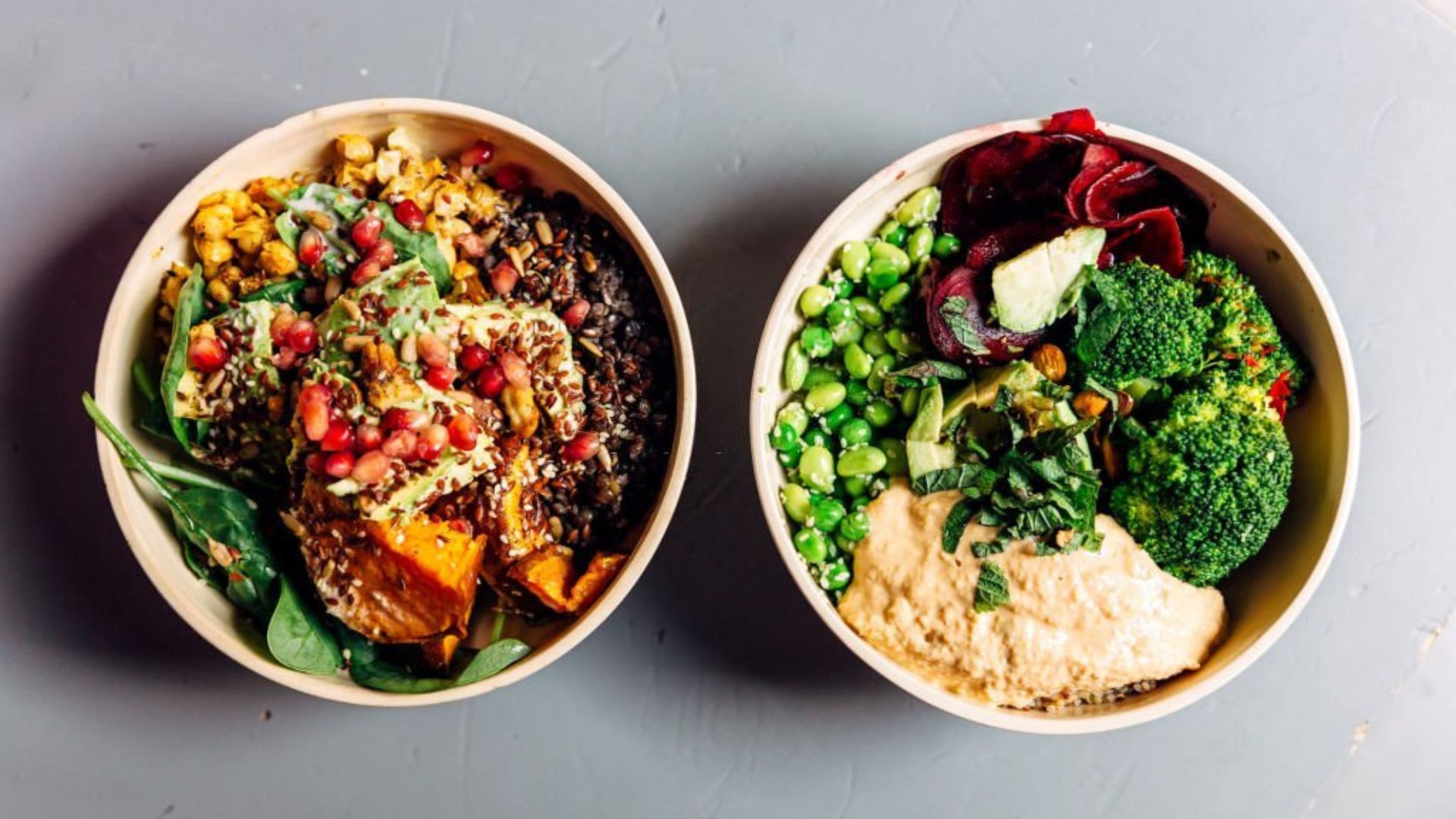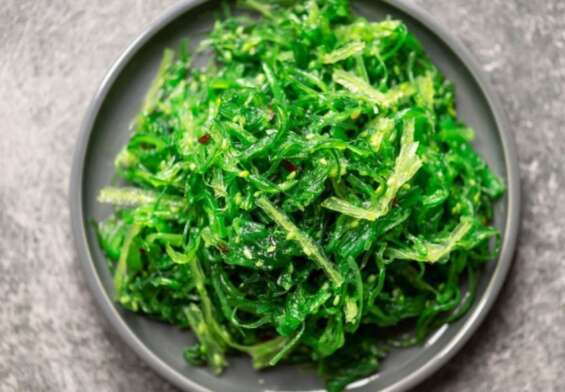
Atkins Diet: How Low-Carb Eating Can Help You Lose Weight
Atkins Diet is a popular low-carbohydrate diet designed to help people lose weight quickly and effectively. It is based on the idea that by reducing the consumption of carbohydrates and replacing them with protein and fat, the body can burn fat more efficiently. The diet was developed by Dr. Robert C. Atkins in the early 1970s and has since become one of the most popular diets in the world. The Atkins Diet is divided into four phases: induction, balancing, fine-tuning, and maintenance. Each of these phases has specific dietary goals and requirements. The diet is effective for weight loss and has been praised by some nutritionists and medical professionals.
The Benefits of the Atkins Diet
The Atkins Diet has been gaining popularity in recent years as an effective way to lose weight and improve overall health. This low-carbohydrate, high-protein eating plan is based on the principle that reducing carbohydrate intake and eating more protein-rich foods help people to lose weight by reducing hunger and stimulating the body to burn fat.
The Atkins Diet divides foods into four groups: proteins, fats, carbohydrates, and fruits and vegetables. Protein foods such as lean meats, fish, eggs, and low-fat dairy are emphasized. Fats such as olive oil, nuts, and avocados are also recommended. Carbs such as bread, pasta, and rice are limited, and fruits and vegetables are encouraged.
One of the main benefits of the Atkins Diet is that it can help people to lose weight quickly. By reducing the number of carbohydrates consumed and increasing the amount of protein, the body is forced to use stored fat for energy, leading to rapid weight loss.
The Atkins Diet is also beneficial for improving overall health. By reducing the number of processed carbohydrates such as white bread, pastries, and sugary drinks, people can reduce their risk of developing diabetes, heart disease, and certain cancers. Additionally, by increasing the number of healthy fats and proteins, people can reduce their risk of developing high cholesterol and high blood pressure.
Finally, the Atkins Diet is beneficial because it is easy to follow. Unlike other diets that require counting calories or measuring portions, the Atkins Diet simply requires people to reduce their intake of carbohydrates and increase their intake of proteins and healthy fats. This makes it easy to stick to, even for those who are busy and don’t have time to count calories or prepare complicated meals.
In conclusion, the Atkins Diet is an effective way to lose weight quickly and improve overall health. By reducing the intake of carbohydrates and increasing the intake of proteins and healthy fats, people can reduce their risk of developing diseases such as diabetes, heart disease, and certain cancers. Additionally, the Atkins Diet is easy to follow, making it an excellent choice for those who want to lose weight quickly and easily.
How to Follow the Atkins Diet
The Atkins diet is a high-protein, low-carbohydrate diet that has become increasingly popular in recent years. It is based on the premise that consuming fewer carbohydrates and more protein and fat can help the body burn fat, leading to weight loss. Following the Atkins diet requires adjusting your eating habits and lifestyle to incorporate the principles of the diet.
First, familiarize yourself with the four phases of the Atkins diet. The Induction phase is the most restrictive and requires you to limit your carbohydrate intake to 20 grams per day. This phase is typically followed for two weeks, although some people may need to stay in it longer. The Ongoing Weight Loss phase slowly increases your carb allowance, adding 5 grams of carbs per week until you find the level that allows you to continue losing weight. The Pre-Maintenance phase is designed to help you transition to a maintenance diet. You’ll slowly increase your carb intake until you reach the level that allows you to maintain your weight. Finally, the Lifetime Maintenance phase is designed to help you maintain your weight without having to count carbs.
Once you’ve familiarized yourself with the phases of the Atkins diet, it’s time to start making changes to your diet and lifestyle. Make sure to include plenty of low-carb proteins, such as fish, eggs, and lean meats, as well as healthy fats like avocados, nuts, and olive oil. Avoid starchy foods, such as potatoes, white rice, and white bread, and opt for low-carb alternatives, such as cauliflower rice and almond flour.
In addition to changing your food choices, it’s important to get regular exercise and drink plenty of water. Exercise will help you burn fat and stay in shape while staying hydrated can help keep you feeling full and energized.
By following the Atkins diet and making smart food choices, you’ll be well on your way to achieving your weight loss goals.
Low-Carb Recipes for the Atkins Diet
The Atkins diet is a popular low-carb diet that can help you lose weight and improve your health. While this diet has many benefits, it can be difficult to come up with ideas for low-carb meals that are both healthy and delicious. To make it easier, here is a selection of low-carb recipes for the Atkins diet that are sure to please.
Breakfast
Egg Muffins: Preheat your oven to 350°F. Grease a muffin tin with cooking spray. In a medium bowl, whisk together six eggs, 1/2 cup of grated cheese, 1/2 cup of diced bell peppers, 1/4 cup of diced onion, 1/4 cup of diced ham, and 1/4 teaspoon of salt. Divide the mixture among the muffin cups and bake for 20 minutes or until the eggs are set.
Lunch
Cobb Salad: Place a bed of lettuce on a plate and top with 1/4 cup of diced cooked chicken, 1/4 cup of diced cooked bacon, 1/4 cup of chopped tomatoes, 1/4 cup of sliced cucumbers, 1/4 cup of crumbled feta cheese, and 1/4 cup of sliced avocado. Drizzle the salad with a low-carb dressing of your choice.
Dinner
Grilled Salmon: Preheat your grill to medium-high heat. Brush a fillet of salmon with olive oil and season with salt and pepper. Grill the salmon for 4-5 minutes per side or until cooked through. Serve with a side of steamed vegetables.
By following the Atkins diet and using these low-carb recipes, you can enjoy healthy and delicious meals that are sure to please. With these recipes, you can enjoy the benefits of the Atkins diet without sacrificing flavor.
Atkins Diet-Friendly Snacks
- Hard-boiled Eggs: Hard-boiled eggs are a great snack for those following the Atkins Diet. They are high in protein and healthy fats and low in carbohydrates. Plus, they are easy to prepare and easy to carry with you if you are on the go.
- Nuts and Seeds: Nuts and seeds are an excellent snack for those on the Atkins Diet. They are full of healthy fats, protein, and fiber, and they are low in carbohydrates. Almonds, walnuts, macadamia nuts, sunflower seeds, and pumpkin seeds are all great choices.
- Cheese: Cheese is a great snack for those on the Atkins Diet. It is high in protein and healthy fats and low in carbohydrates. Some of the best types of cheese to choose from are cheddar, mozzarella, and Swiss.
- Vegetables: Vegetables are an excellent snack for those on the Atkins Diet. They are low in carbohydrates and full of vitamins, minerals, and fiber. Some of the best options are celery, carrots, cucumbers, bell peppers, and tomatoes.
- Olives: Olives are a great snack for those on the Atkins Diet. They are high in healthy fats and low in carbohydrates. They are also full of vitamins, minerals, and antioxidants.
- Deli Meat: Deli meat is a great snack for those on the Atkins Diet. It is high in protein and low in carbohydrates. It’s also a great source of B vitamins and iron. Just make sure to choose lean cuts of meat and avoid processed meats like salami and bologna.
Atkins Diet and Exercise
The Atkins Diet is a popular diet that focuses on lowering carbohydrates and increasing protein intake. It encourages weight loss by placing the body into a state of ketosis, which is when the body burns fat for energy instead of carbohydrates. The Atkins Diet is often accompanied by an exercise program, which can help maximize the weight loss benefits of the diet and improve overall health.
The Atkins Diet is broken down into four phases. In Phase 1, known as the Induction phase, carbohydrates are limited to 20-25 grams per day to induce ketosis. This phase lasts two to four weeks. In Phase 2, known as the Balancing phase, carbohydrates are gradually increased to 40-60 grams per day. This phase lasts until the desired weight loss is achieved. In Phase 3, known as the Fine-Tuning phase, carbohydrates are increased to 80-100 grams per day. This phase lasts until the desired weight and body composition is achieved. Finally, in Phase 4, known as the Maintenance phase, carbohydrates are increased to 120-150 grams per day. This phase is intended to help maintain the weight loss and body composition achieved in the previous phases.
Exercise is an important component of the Atkins Diet and should be incorporated into each of the phases. In Phase 1, cardio exercise is recommended to help burn fat and increase metabolism. During Phases 2 and 3, strength training exercises are recommended to help build muscle and tone the body. In Phase 4, both aerobic and strength training exercises are recommended to help maintain the desired body composition.
Exercise is essential for optimal health, and the Atkins Diet offers a healthy way to lose weight. By following the phases of the Atkins Diet and incorporating an exercise program, individuals can maximize the weight loss benefits of the diet and improve their overall health.
Tips for Sticking to the Atkins Diet
1. Prepare meals ahead of time: Planning your meals ahead of time is a great way to stay on the Atkins Diet. It will help you to better manage your carbohydrate intake, as you will know exactly what ingredients you are using and how much.
- Stock up on low-carb snacks: Keeping a variety of low-carb snacks on hand will help you to stay on track. Try to keep snacks that are under 10 grams of carbohydrates per serving.
- Drink plenty of water: Staying hydrated is essential for any diet, but especially for the Atkins Diet. You should aim to drink at least eight 8-ounce glasses of water per day.
- Monitor your progress: Keeping track of your progress is important. Monitor your weight and make sure that you are seeing results. If you feel like you are not making the progress you would like, you may need to adjust your diet.
- Don’t be too hard on yourself: Sticking to a diet can be hard. If you find that you are having a tough time, don’t beat yourself up. Just get back on the wagon and keep going.
- Exercise regularly: Exercise is important for any diet. Make sure to incorporate regular exercise into your routine. This can help to boost your metabolism and keep you feeling energized.
The Science Behind the Atkins Diet
The Atkins Diet is one of the most popular diets in the world. It has been around since the 1970s and is based on the idea of reducing carbohydrate intake and eating mostly high-fat foods. This diet has been studied extensively and has been found to be effective for weight loss.
The Atkins Diet works by reducing the body’s reliance on carbohydrates as an energy source. When carbohydrates are consumed, they are broken down into glucose, which is then used as the body’s primary energy source. When carbohydrates are restricted, the body is forced to use fat for energy, which leads to weight loss.
The Atkins Diet also encourages the consumption of high-protein foods, which help reduce hunger and promote satiety. This helps to prevent overeating, which is often a problem with other diets. Furthermore, high-protein foods are also beneficial for maintaining muscle mass while losing weight.
The Atkins Diet also restricts certain unhealthy foods, such as processed sugar and refined carbohydrates. These foods are known to contribute to weight gain and other health problems. Avoiding these foods can reduce your risk of developing certain diseases and conditions.
Overall, the Atkins Diet is a safe and effective diet for those who want to lose weight and reduce their risk of certain diseases. The diet encourages the consumption of healthy fats, proteins, and vegetables while avoiding processed and refined carbohydrates. This diet helps to reduce hunger and promote satiety, making it easier to maintain a healthy weight.
How to Incorporate Vegetables Into Your Atkins Diet
Following the Atkins diet can be an effective way of losing weight and improving your overall health. While the diet focuses on eating high-protein foods, it is also important to incorporate vegetables into your meal plan. Doing so can provide essential vitamins and minerals, as well as fiber, which can help improve digestion and regularity.
To successfully incorporate vegetables into your Atkins diet, there are a few guidelines to follow. First, focus on low-carb vegetables. Examples include leafy greens, such as spinach and kale, as well as broccoli, cauliflower, and Brussels sprouts. Additionally, tomatoes, bell peppers, mushrooms, and zucchini are all good options. All of these vegetables can be used to create a variety of meals, from salads to stir-fries.
When preparing your vegetables, avoid adding sugar or high-carb ingredients. Instead, use herbs and spices to bring out their flavor. Additionally, to create a more satisfying meal, add healthy fats such as olive oil or avocado. This will help provide flavor and additional health benefits.
Incorporating vegetables into your Atkins diet is a great way to round out your meals and get the nutrients you need to stay healthy. Be sure to focus on low-carb vegetables and avoid adding high-carb ingredients. Use herbs and spices to bring out the flavor of your meals, and don’t forget to add healthy fats for extra flavor and nutrition. With these tips, you can easily enjoy the benefits of a balanced diet while following the Atkins diet.
The Atkins Diet and Weight Loss
The Atkins Diet is a popular weight loss program developed by Dr. Robert Atkins. It is based on the idea that reducing carbohydrates in a person’s diet will cause their body to burn stored fat for energy instead. The program focuses on reducing the intake of refined carbohydrates like sugar and white flour, as well as processed foods, and emphasizes the consumption of lean proteins, healthy fats, and plenty of vegetables and fruits.
Atkins claims that following this program will result in fast and effective weight loss. The diet consists of four phases: induction, ongoing weight loss, pre-maintenance, and maintenance. During the induction phase, carbohydrates are drastically reduced and only 20 grams per day are allowed. During the ongoing weight loss phase, the amount of carbohydrates is slowly increased with the goal of reaching a level of carbs that will cause the body to continue burning fat for energy. In the pre-maintenance and maintenance phases, the number of carbohydrates is increased again while keeping the weight loss steady.
The Atkins Diet has been shown to be effective in helping people lose weight, although there is some debate over how safe it is in the long term. It has been linked to increased levels of bad cholesterol and potentially dangerous levels of ketones. It is important to note that this diet is not suitable for everyone, including those with kidney or liver disease, pregnant women, or children under the age of 18.
If you are considering the Atkins Diet, it is important to consult a doctor before beginning. A doctor can provide advice and guidance to ensure that you are following the diet in a safe and healthy way.
The Pros and Cons of the Atkins Diet
The Atkins diet has become a popular choice for those looking to lose weight. It is a low-carbohydrate diet that emphasizes the consumption of proteins and fats and limits the intake of carbohydrates. Proponents of the diet claim that it can lead to rapid weight loss, improved energy levels, and better overall health. However, there are potential risks involved with following an Atkins diet that should be considered before committing to the plan.
Pros
- Weight Loss: The Atkins diet has been shown to be effective in helping people lose weight quickly. Research has found that following the Atkins diet can lead to greater weight loss than other popular diets, such as the Mediterranean diet and the DASH diet.
- Improved Energy Levels: The Atkins diet can lead to improved energy levels since it focuses on consuming proteins and fats which are slow-burning sources of energy. This can help to reduce fatigue and improve physical performance.
- Heart Health: Studies have found that following the Atkins diet can lead to improved heart health. A diet high in proteins and fats can help to reduce cholesterol levels, which can reduce the risk of heart disease.
Cons
- Side Effects: Following the Atkins diet can lead to some side effects, such as headaches, constipation, and bad breath. The body can also become overly acidic, which can lead to a host of health issues.
- Nutritional Deficiencies: The Atkins diet can lead to nutritional deficiencies since it eliminates many foods that are rich in important vitamins and minerals. It is important to supplement a diet with multivitamins and other supplements to ensure the body is getting all of the nutrients it needs.
- Unsustainable: The Atkins diet is challenging to sustain over the long term since it requires strict adherence to the diet plan. It is essential to develop healthy eating habits that can be maintained in the long time in order to achieve and maintain healthy weight loss.
Overall, the Atkins diet can be an effective way to lose weight quickly and improve overall health. However, it is important to consider the potential risks and drawbacks of this diet before committing to it. Additionally, it is important to develop healthy eating habits that can be maintained for the long term in order to achieve and maintain a healthy weight.
Conclusion
The Atkins Diet has become increasingly popular in recent years, and for good reason. It is a reliable source of weight loss and can be beneficial for those who have difficulty controlling their cravings and hunger. While it can come with some short-term side effects, long-term studies have shown that it is a safe and effective way to lose weight. Ultimately, the decision to try the Atkins Diet should be made after careful consideration and consultation with your healthcare provider.











